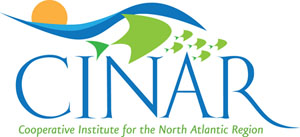If we could travel back in time, we would return to 2009 with a much better understanding of the degradation of our oceans. Since time travel isn’t in the cards, having Callum Roberts act as our guide is the next best thing.
In The Unnatural History of the Sea, the professor of marine conservation at the University of York in England clearly describes how we have lost much more marine life than we realize. Roberts states that when we attempt to restore fisheries, we may only be trying to arrest recent declines. “Where human impacts on the sea’s populations extend far back in time, it is easy for us to view the diminished productivity of today’s seas as normal,” he writes. “We have known nothing different.”
He argues that we need the perspective of the past to inspire more aggressive action. Only then can we bring back the sea’s productivity and health.
Early explorers along the European and North American coasts wrote detailed accounts of the sea life they encountered. These reports were so glowing that they might seem suspect to readers today. Yet as Roberts reviews these accounts, he provides evidence that the seas really were teeming with an amazing array of fish and marine mammals.
Roberts couples these reports of initial abundance with a history of fishing over the last several hundred years. Fishers took the fish closest to their homes first, then moved further and further offshore as they depleted local stocks. New technologies, such as bottom trawling nets in the 14th century, steam trawlers in the 19th century, and advanced electronics in the 20th century, helped them chase fish more effectively. It is now nearly impossible for the fish to hide.
He decries how destructive and wasteful some fishing methods are. Bottom trawling affects not just the sea-floor habitat needed by the fish harvested there, but the health of the entire ecosystem. Bycatch results in much dead or dying fish being tossed overboard. Bykill consists of fish and invertebrates that don’t reach the surface but that are killed by fishing gear nevertheless.
The figures Roberts provides on species declines are startling. The cod population on the Grand Banks off the coast of Newfoundland is estimated to be less than 1 percent of what it was prior to harvesting. Oyster yields in Chesapeake Bay have dropped to 80,000 bushels per year from a peak of 15 million in the 19th century. He estimates that the total mass of fish in European seas today is 5 percent of what it was before industrial fishing began.
After all this, Roberts turns out to be optimistic about the future of the sea.
“The creation of national and international networks of marine protected areas, together with some simple reforms in the way we fish, could reverse this run of misfortune,” he states. “We cannot return the oceans to some primordial condition absent of human influence. But it is in everyone’s interest to recover some of the lost abundance of creatures in the sea.”
In stark contrast to terrestrial preserves, which make up 12 percent of the total landmass, only 0.6 percent of the sea is at least partially protected from fishing, according to Roberts. He makes a strong case for designating far greater sections of the sea as preserves. This would allow fish habitat to recover and let fish live longer, reaching ages favoring greater reproductive success.
Roberts writes that spillover fish from protected areas would resupply fishing grounds, so there would actually be more fish available to harvest, not less. He also offers recommendations on management policies to make fisheries more sustainable.
Callum Roberts’s writing is quite engaging and his proposals are compelling. With The Unnatural History of the Sea newly available in paperback, his call to action can deservedly reach a larger audience.
As he says: “…if people forget what the seas were once like, and consider today’s waters as something approaching natural, then we could end up trying to maintain marine ecosystems in their present degraded states. We have to do better than that.”
Print


















